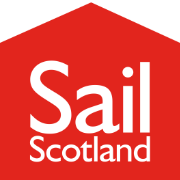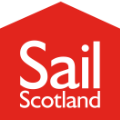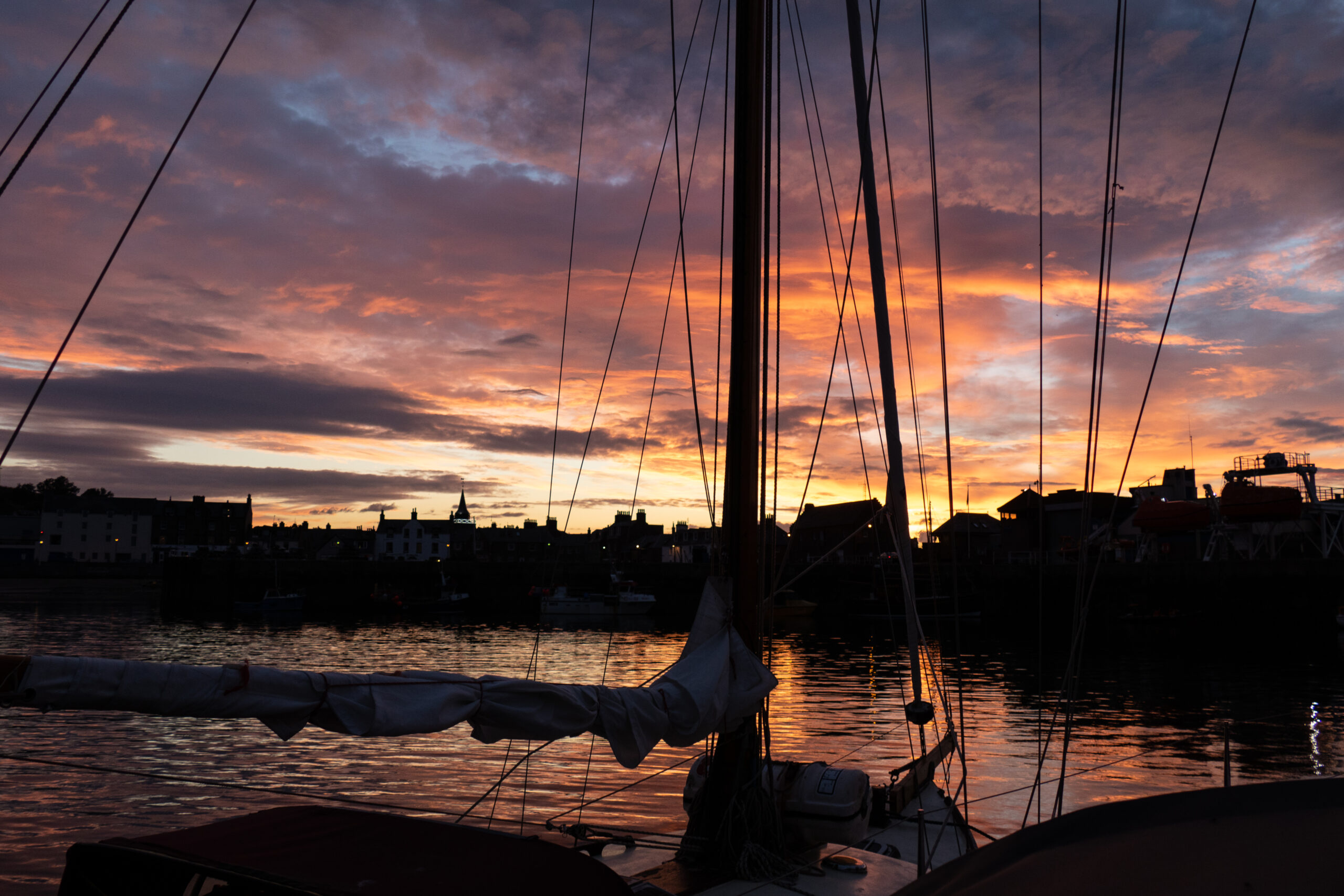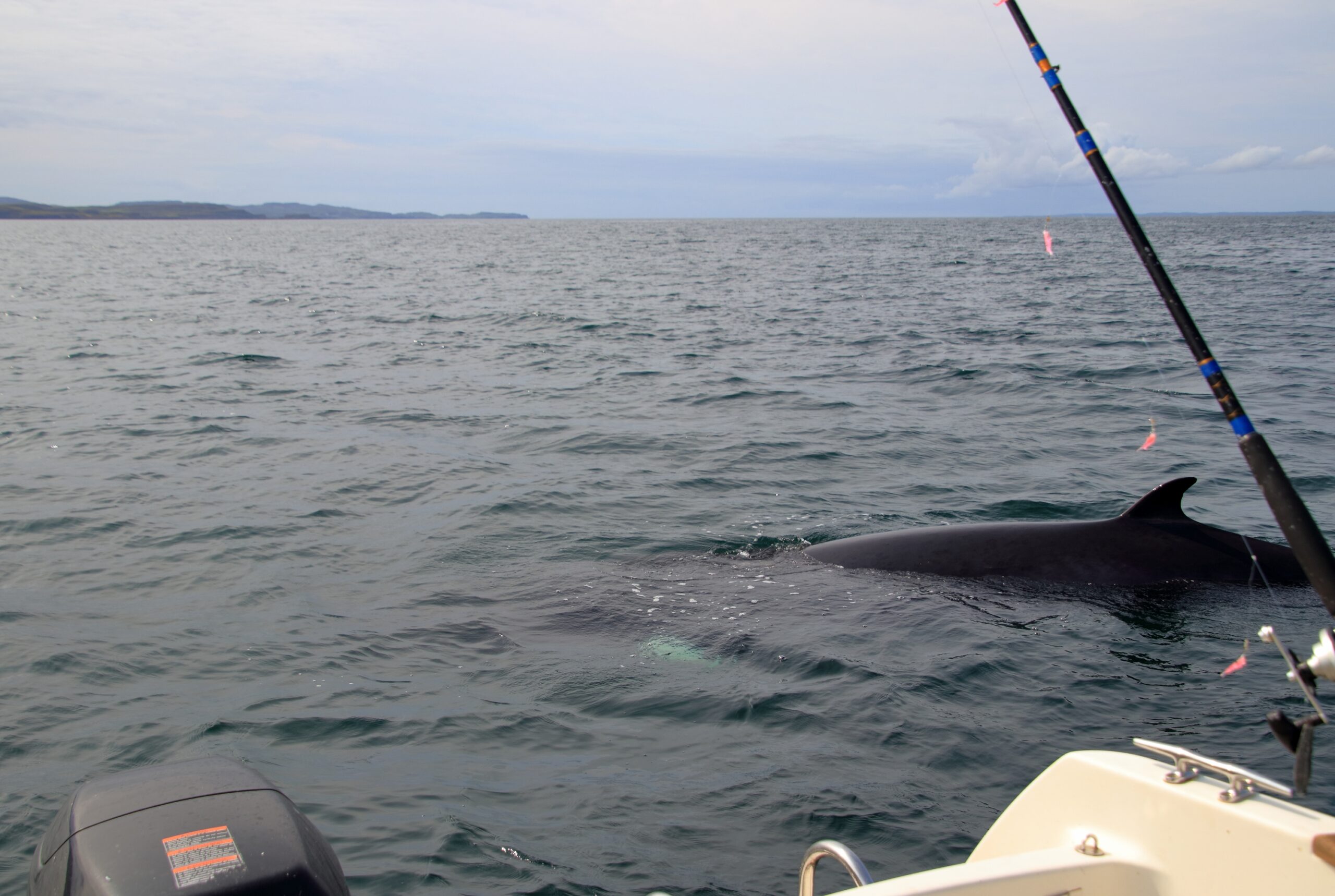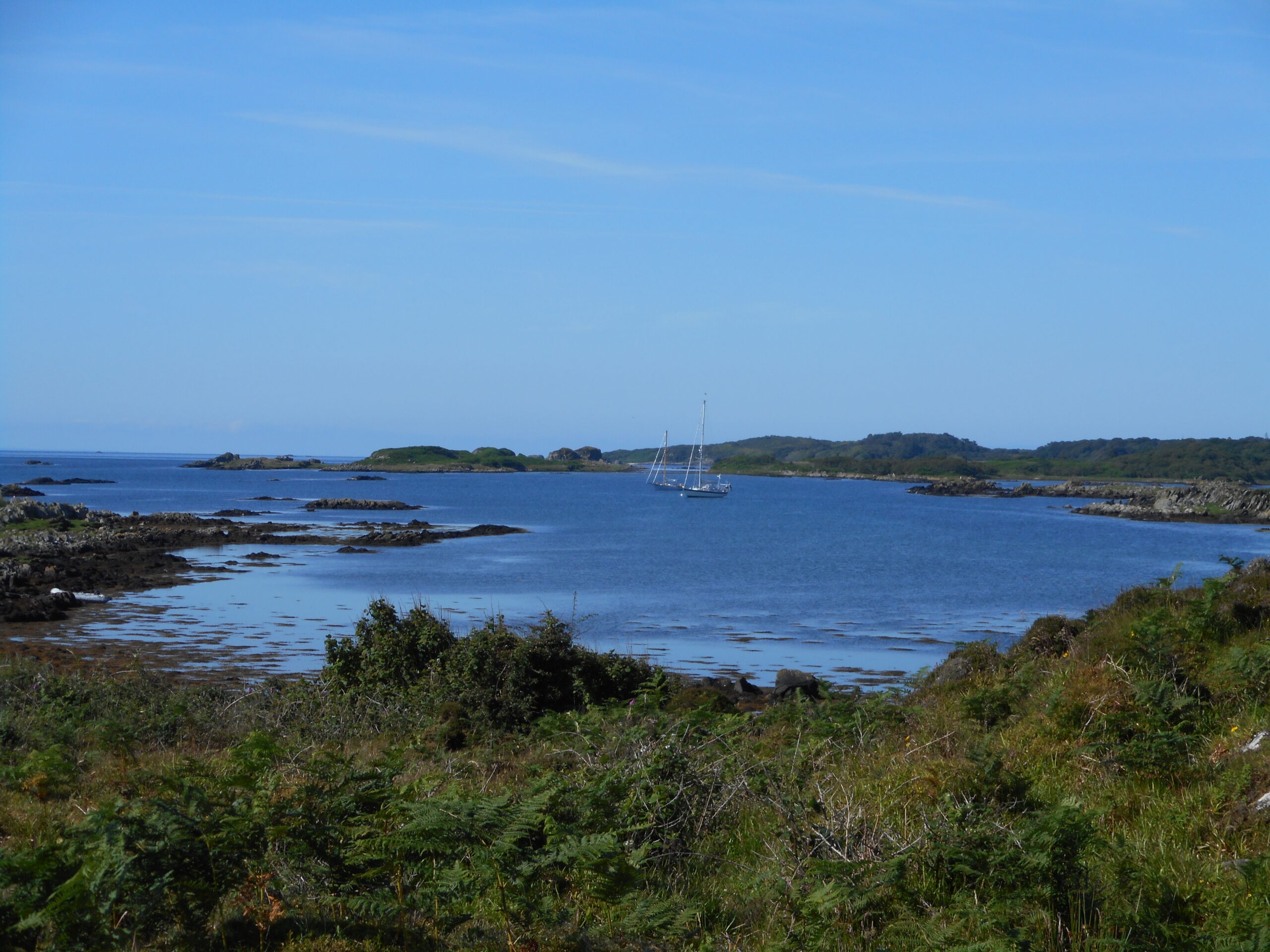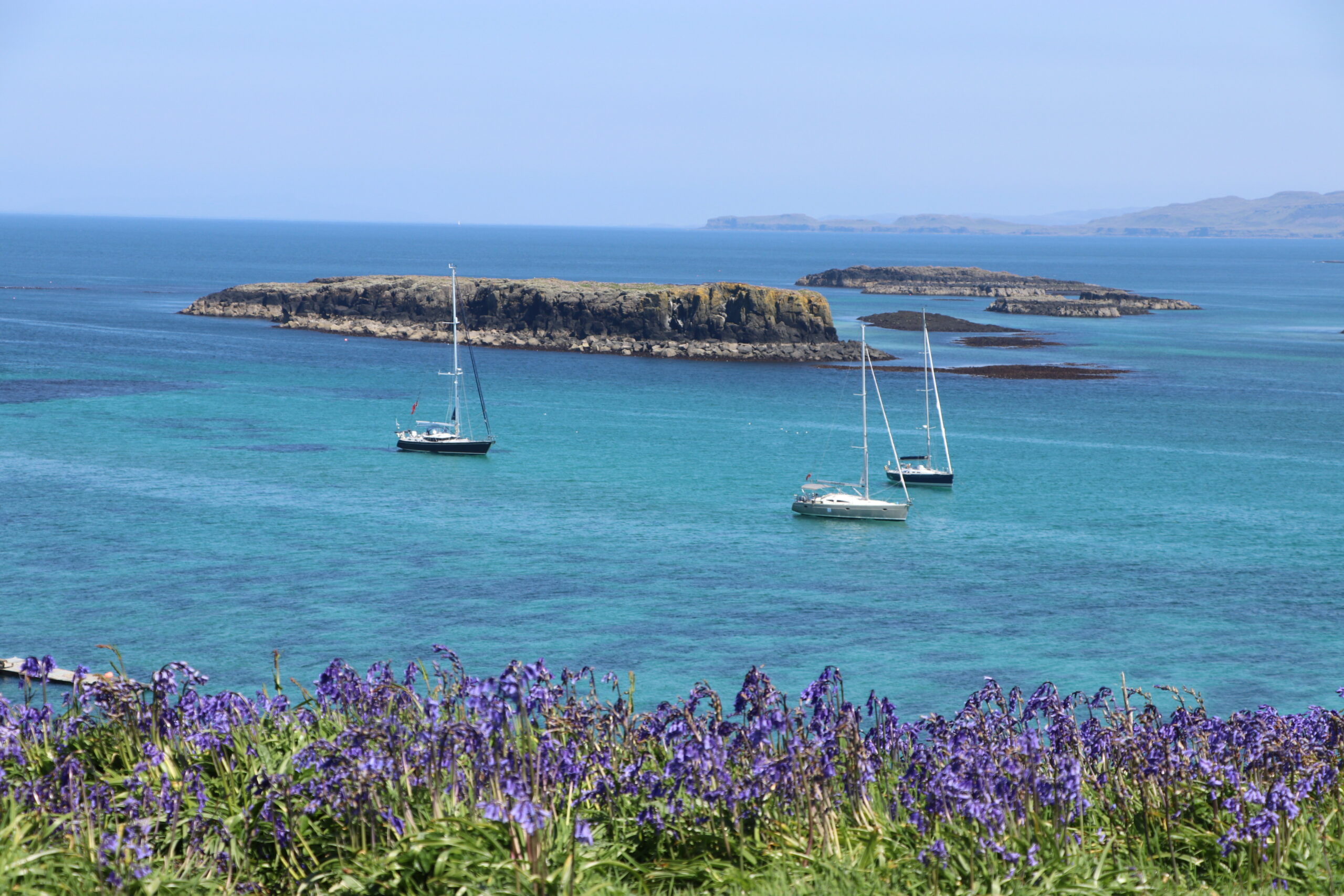Argyll & The Islands
Argyll & The Islands
A TRIP TO ARGYLL AND THE ISLANDS IS A VOYAGE THROUGH HISTORY, with reminders of the ancient past never far away. Sheltered waters can always be found for a pleasant day’s sailing among the many beautiful islands, while longer passages are an option for those seeking more of a challenge.
Argyll has been described as Scotland’s richest prehistoric landscape and cradle of the Scottish nation, and this unrivalled heritage is a constant backdrop for visiting sailors. They will find a magnificent choice of sheltered anchorages throughout Argyll and the Islands together with many moorings, harbours and marinas. There have been significant improvements with the installation of several pontoon systems and associated facilities in some remote lochs and harbours.
Those sailing from the south or east will usually arrive from either the Mull of Kintyre or the Crinan Canal, which has a reputation as ‘Britain’s prettiest short-cut’. Many Scottish sailors will often start their season in the Firth of Clyde, then take this picturesque short-cut to the west coast, usually breaking their journey at one of the pontoons along the canal to take advantage of the pubs and hotels at Ardrishaig, Lochgilphead, Cairnbaan and Crinan. The journey can be completed in as little as four hours or as much as a leisurely three-day cruise, taking in the scenery and nearby attractions.
Those arriving from the Irish Sea via the North Channel and Mull of Kintyre, or those visiting from Northern Ireland, will usually sail through the Sound of Jura and make their first landfall at Islay, Jura or Gigha. All three have mooring facilities for the visiting sailor, while Islay also boasts pontoon facilities at Port Ellen. Jura has relatively new pontoons at Craighouse (suitable for dinghies) and has 16 moorings in the bay. Both Islay and Jura are well known for their distilleries; the former has eight and latter has one, most of which have their own moorings or small pontoons for visiting boats. Gigha has a reputation for fine sandy beaches and has also upgraded facilities for visiting sailors in recent years with a large number of serviced moorings and a short-stay pontoon with fine seafood available.
For those seeking a quiet anchorage for the night, Lowlandman’s Bay on the east of Jura offers shelter from most wind directions, while Loch Tarbert on the west side is a favourite with many local sailors. Seclusion is usually guaranteed, together with stunning sunsets and the opportunity to see the deer come down to the water’s edge in the evening, as well as otters hunting along the rocky shoreline.
Sailors remaining within the Sound of Jura have the option of venturing up West Loch Tarbert or lochs Sween and/or Caolisport on the eastern (mainland) side of the sound. West Loch Tarbert extends deep into the Kintyre peninsula, with the head of the loch being less than a mile from the harbour of Tarbert on the peninsula’s eastern side. There are a number of anchorages within the loch and an old pier at the eastern limit.
At the head of Loch Sween the village of Tayvallich offers a small shop, a café and a lively inn which hosts traditional music sessions. The village bay gives superb shelter from all wind directions and has three visitors’ moorings along with a few pontoons. If conditions are stable then an alternative anchorage can be found at the Fairy Isles, a short distance from the village.
Further north, both Loch Crinan and the Sound of Jura lead into the wonderful sailing areas of lochs Craignish, Shuna and Melfort. Excellent marina facilities can be found toward the head of Loch Craignish at Ardfern Yacht Centre and at Craobh Marina on Loch Shuna with further yard facilities and moorings at Crinan.
For those who prefer anchorages, there are numerous options in the area. These include up the east side of Loch Craignish, where shelter is again available from every wind angle, or the west side where you will also find the loch known locally as ‘The Lagoon’ which, thanks to the Craignish Lagoon Mooring Association, features a clean-bottom anchoring area defined between red and green buoys.
The Dorus Mor lies at the south end of the Craignish peninsula and forms the first of the important tidal gates in this area. A general comment is that, while the tides may be strong at times, they are predictable, and providing the visiting sailor can read a tide table and tidal stream atlas they should present no real difficulties.
Oban and Kerrera
All tide step ashore facilities in the heart of this famous west coast hub. Air, train and ferry links nearby.
Campbeltown
A great haven for rounding Mull of Kintyre or heading to the west from the Clyde or from the south
Mallaig
All-tide marina in the heart of Mallaig. Ideal location for exploring Skye, the Outer Hebrides and northwest Scotland.
Tarbert
Ardfern
Croabh
Puiladobhrain
Ulva Ferry Pontoon
Arisaig
Tobermory
Staffa
Holy Loch Marina
Portavadie
Coll
Travelling north via one of the tidal gates of the Sound of Luing, Cuan Sound or the Gulf of Corryvreckan brings the sailor to the Firth of Lorne. After passing the islands of Easdale and Luing, many boats will stop at the popular anchorage of Puilladobhrain (Pool of the Otter) from where a pleasant evening walk over the hill takes you to the ‘Bridge over the Atlantic’ and the local inn. A short distance further north, it is possible with the use of local sailing directions to follow the buoyed and tide-dependent channel into Loch Feochan which has a mooring in its north-west corner at Ardoran Marine.
Oban, the principal town and port of the area, has most major facilities and is the focal point for many sailing events during the season. As part of an evolving harbour management strategy, the Oban Bay Management Group has introduced a new code of practice which visiting vessels should be aware of. There is a landing pontoon and 16 visitor moorings located at the north end of Carding Mill Bay, while summer 2017 saw the opening of the new transit marina. Installed at the North Pier, the new facility allows visiting vessels to berth centrally and step ashore in the heart of Oban. Additional berthing and marina services are provided by Oban Marina on the nearby island of Kerrera. Here, the restaurant offers evening meals, and during the summer months the marina operates an hourly ferry service to and from the mainland, landing at Oban’s North Pier. Bookings are necessary, and arrangements can also be made for out-of-hours and private water-taxi services. A short distance north of Oban there is another serviced marina at Dunstaffnage, also with an on-site bar and restaurant.
Boats making for the Caledonian Canal will continue north up Loch Linnhe to Corpach, passing the popular anchorage of Port Appin or taking one of the various complimentary moorings owned by the various lochside hostelries including the Pierhouse Hotel, Appin, and the Holly Tree, Kentallen. There are further stopping opportunities at Loch Leven (for boats able to pass under the Ballachulish Bridge) and at Corran during settled weather. In 2016 a new landing pontoon was installed at Fort William, on Loch Linnhe, not only to facilitate cruise ship visits but allowing visiting yachts to stop off on their way to and from the canal. Bear in mind that, at present, the pontoon is very busy during cruise ship calls, but interesting plans are afoot to develop facilities further here in the future.
Sailors venturing west will head up the Sound of Mull, passing Duart Castle as they enter. This is the final tidal gate in the area and west of here the tides are typically less than one knot. Lochaline lies a short distance up the sound on the north shore and, while very sheltered, required anchoring overnight in deep water in the past. However, pontoons and step-ashore facilities are now provided, including showers, toilets, a laundrette and Wi-Fi access on the west side of the loch, with the village within easy walking distance. Entrance in and out of the loch usually requires a favourable tide, which is the case with many west coast lochs.
Tobermory is the main town on Mull and a popular tourist destination. A useful refuelling point for vessels and crew, it also has many famous watering holes as well as a distillery. Tobermory has benefited from improvements to its pontoons and a modern shower block and toilets for visiting sailors in the harbour association building. The mooring facilities have also been upgraded and, apart from in the busiest of weeks, it is now usually possible to avoid having to anchor in the bay.
There are a number of route choices for those venturing west from Tobermory out of the Sound of Mull. If time permits then the northern option will take you around Ardnamurchan and into the waters around Skye, while heading west across the Sea of the Hebrides will lead to the islands of Barra, Harris and Uist.
For those on a limited timescale, it is probable that these destinations will have to wait for another trip, and instead the choice will either be to head west for the islands of Coll and Tiree or turn southwards along the western side of Mull. Both routes involve open-water sailing and are often rewarded with a wealth of wildlife. Sea eagles are a regular sight around Mull, while whales, basking sharks, dolphins and porpoise can also be seen.
The Isle of Coll has one very sheltered bay at Arinagour, the main village on the island, where there are a limited number of moorings and plenty of suitable anchorages. The neighbouring island of Tiree, famous for its high sunshine hours, sandy beaches and windsurfing, is better suited to a daytime anchorage as most of the bays are more exposed. As well as hosting the Wave Classic windsurfing event, Tiree boasts an award-winning traditional music festival held each summer beside the stunning Crossapol Bay beach.
The west side of Mull has a number of sheltered anchorages, mostly around the island of Ulva. The newly installed visitor pontoons located at the Ulva Ferry can accommodate eight boats up to 16m in length, and restaurants and other amenities can be reached via the community bus. Sailing along this western coastline allows a visit to the Treshnish Isles and Staffa – home of Fingal’s Cave. It is possible to anchor and view the cave from either the island or a tender during settled weather. Further south lies the island of Iona and its world-famous abbey.
The main village on the Ross of Mull is Bunessan, where it is possible to anchor in a number of bays. Visitors are advised to anchor clear of the fairway to the main pier which is used by fishing boats all year round. The peninsula also contains many fine anchorages, including Tinker’s Hole and Carsaig, from where the visiting sailor can choose to return home by either heading east through the Torran Rocks or south to Colonsay and then through the Sound of Islay and the Sound of Jura.
Sailing clubs and associations on the west coast host a range of exciting and varied racing events, the go-to resource for information about these being the Clyde Yacht Clubs Association’s online calendar (www.cyca-online.org.uk). While many of these are for club sailors, there are also some events suitable for visitors.
One of these is the Owen Sails / Ardfern Yacht Centre Round Mull Race. It consists of three passages, Oban-Tobermory, Tobermory-Bunessan and Bunessan-Oban, and has both white sail and spinnaker classes. Full details are available from www.obansailingclub.org
The largest of the west coast regatta events is the West Highland Yachting Week, which takes place between Craobh Haven, Oban, and Tobermory. Unlike most regattas it moves from centre to centre during the event, offering competitors an ever-changing scene on 80 miles of coastline. An attractive combination of round-the-buoys and passage racing is supported by the regatta’s excellent social programme. More information is available from www.whyw.co.uk
While the majority of racing events are traditional regattas, there are others worth mentioning. The first of these is the three-day Scottish Islands Peak Race (www.scottishislandspeaksrace.com). This starts in Oban, where runners from each boat complete a short run around the town. The next step is a sail to Mull where they have to scale and descend Ben More. The crews then sail to Craighouse for runners to go up the three Paps before heading back to their boats for an overnight sail around the Mull of Kintyre to Arran, and a final scramble up Goat Fell before dashing across the finish line at Troon.
A similar event is the Three Peaks Yacht Race between Barmouth in North Wales and Fort William, passing through the Argyll cruising waters en route. Competitors have to sail over 389 miles, cycle 18 miles, run 72 miles and climb over 14,000 feet. More details can be found at www.threepeaksyachtrace.co.uk
